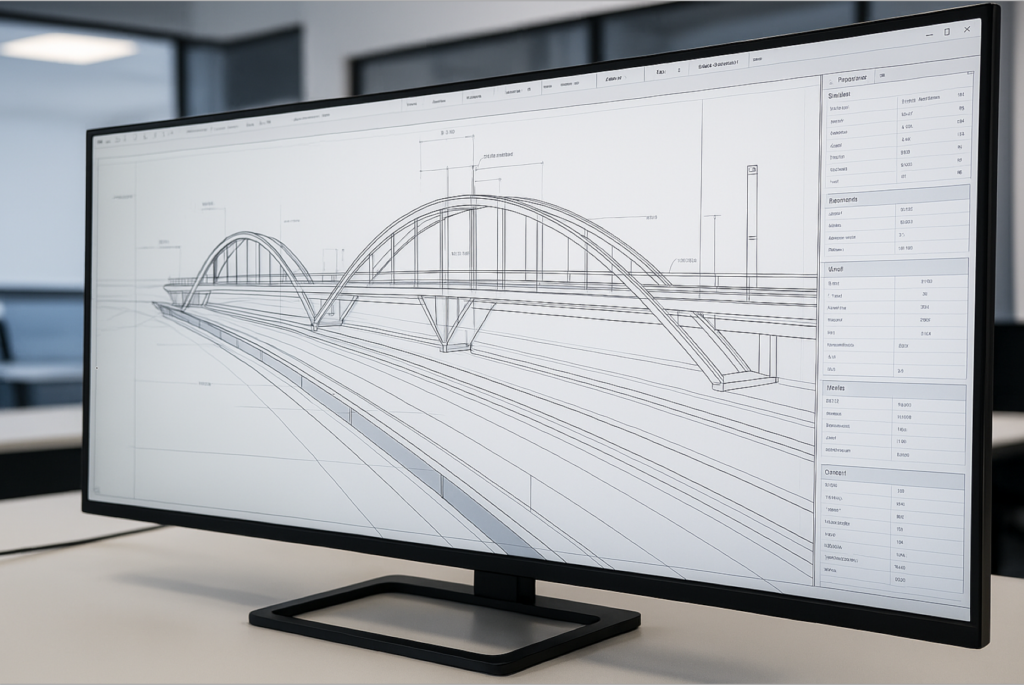In 2018 a 2 billion infrastructure project in Texas was delayed 6 months. What was the cause? Misplaced engineering drawings. Contractors were working off old plans and rework costs exceeded 12 million. This isn’t uncommon—40% of construction delays are due to poor document control (McKinsey & Company).
In the fast paced world of civil engineering and construction, good document management isn’t a nice to have—it’s a must have. With hundreds of drawings, project documents, construction documents and transmittal letters flying between architects, engineers, general contractors and project managers, having a good transmittal system can mean the difference between smooth project execution and costly delays. This guide will unravel the secrets behind drawing registers and transmittals, two essential tools in the construction industry that turn chaos into clarity for all project stakeholders. Whether you are part of the design team, a contractor or the project owner, accurate documentation of transmittal documents and other documents is key to mastering document delivery throughout the project lifecycle.
What is a Drawing Transmittal?
A drawing transmittal is a type of transmittal used to accompany engineering drawings. It acts as a cover sheet, the transmittal letter and transmittal document list and track the delivery of critical project documents such as plans, elevations, sections and detailed schematics. In every transmittal letter the sender’s information and other contact information are clearly stated and both the sender and the recipient have a clear paper trail. This paper trail ensures that even if certain documents are accidentally deleted, there is a separate proof.
Purpose of a Drawing Transmittal
- Record Keeping: Every transmittal letter, transmittal document and submittal transmittal documents who sent the drawings, who received them and the transmittal number is assigned on a specific date. These transmittals typically provide a detailed list of project documents.
- Version Control: Transmittals provide version control by ensuring everyone is working off the latest revision of a drawing. This minimizes errors that occur when old materials, contracts and materials are used.
- Accountability: Detailed transmittal letters including the letter of transmittal (used as a cover sheet) support dispute resolution by providing an audit trail. This paper trail is an important part of record keeping in the construction project.
The Purpose of Transmittals
Transmittals in general are not limited to drawings only. They are the backbone of formal communication and record keeping in construction projects. Their purpose includes:
- Formal Communication: Transmittal letters and transmittal forms standardize document delivery. Each transmittal letter provides important details and a paper trail.
- Record Keeping: Every transmittal document ensures project documents are archived including product data sheets and other important documents. This detailed list creates a record for contracts and other construction documents.
- Document Delivery: Transmittals ensure most documents reach the project owner and other project stakeholders accurately. Whether it’s a transmittal letter or a submittal transmittal the information is easily accessible.
- Clarity and Accountability: By including transmittal numbers and important details in each transmittal letter transmittals provide critical information to both the sender and the recipient. This minimizes payment delays and prevents disputes.
- Tracking: Transmittals provide a means to track each document and every change so general contractors, project managers and the design team always have a record of required actions.
A good transmittal process using a transmittal form and letter of transmittal ensures even other construction documents like shop drawings and product samples submitted by sub contractors are controlled.
Streamline your document delivery! BuildTwin’s Drawing Register tool lets you drag and drop your Excel file to instantly create and organize your project drawings—no manual input needed. Explore the platform
What Is a Design Transmittal?
While drawing transmittals focus on the distribution of technical drawings, design transmittals cover a broader range of project documents including specifications, reports and other important documents. These design transmittals support the design team during the review process by providing separate proof of revisions and record keeping.
Role in the Design Review Process:
- Submission for Review: Contractors, designers and subcontractors create transmittal letters and design transmittals to submit for review. These transmittal documents ensure both the design team and project stakeholders have the latest project information.
- Feedback and Approval: Transmittals provide a feedback loop where design transmittal documents record revisions and the design team communicates required actions via transmittal letters.
- Record of Changes: Every letter of transmittal is archived so project managers can keep a list of all transmittal documents as separate proof that important documents have been received.
Table: Comparison Between Drawing and Design Transmittals
| Aspect | Drawing Transmittal | Design Transmittal |
| Focus | Technical drawings (plans, sections, details) | Comprehensive design documents (specifications, reports, drawings) |
| Primary Use | Distributing latest drawing revisions | Submitting designs for review and approval |
| Key Benefit | Version control and clarity | Ensuring design compliance and feedback loop |
Examples of Transmittals in Construction
Transmittals can cover many document types each serving a purpose in the construction process. Here are some examples:
- Drawings:
Plans, elevations, sections and details that are part of the project documents. These drawings including shop drawings and structural design documents are accompanied by a transmittal letter and transmittal document. - Specifications:
Project documents that detail materials, product data sheets and workmanship requirements. - Reports:
Site surveys, feasibility studies and progress reports are important documents and part of the transmittals sent. - Samples and Catalogs:
Product samples and product data sheets which may be part of other documents are included in transmittals. - Shop Drawings:
Detailed fabrication drawings provided by contractors are distributed via a letter of transmittal. - RFIs (Requests for Information):
Transmittals provide clear email correspondence and a complete paper trail for RFIs. - Submittals:
A submittal transmittal along with a transmittal letter ensures other documents and certain documents are approved before proceeding. - Letters and Memos:
General letters of transmittal which include important details support the clear record of communication between one party and another party.
When Are They Used?
- During the design phase: Transmittals are used to update the design team, project owner and general contractors with the latest project documents.
- Before construction: Ensure all approved documents are shared with project stakeholders to prevent payment delays and errors.
- After revisions: Transmittals provide a record that the revised drawing or document is the latest version.
- For quality control: Transmittals ensure every transmittal letter and transmittal document is maintained throughout the project lifecycle.
🔍 Quick Tip: Using a digital document control system like BuildTwin can automatically generate transmittals for each document package sent, reducing manual errors and saving time.

Best Practices for Using Transmittals
Effective transmittal management requires best practices. Here are key recommendations to get your transmittal process right:
Table: Best Practices Checklist
| Best Practice | Description | ✅ Status |
| Clear and Concise Language | Avoid technical jargon where possible.Ensure that all fields (e.g., sender, recipient, document list) are filled out completely. | Implemented |
| Accurate Recipient Information | Double-check email addresses, mailing addresses, and contact numbers.Confirm the designated recipients for each document type. | Checked |
| Proper Document Labeling | Label all attachments with unique identifiers (e.g., drawing numbers, revision dates).Include a brief description of each document to aid quick verification. | In Process |
| Consistent Numbering | Implement a standardized numbering system (e.g., T-001, T-002) for transmittals.This system should be integrated with your drawing register to maintain consistency. | Implemented |
| Rigorous Record Keeping | Archive all transmittals in a central, accessible digital repository.Regularly audit the transmittal records to ensure compliance with project requirements. | Ongoing |
Looking to boost your document management workflow? Discover BuildTwin’s integrated RFI Register and AI Activity Stream that simplifies task creation and tracks revisions seamlessly. See it in action >>
Integrating Drawing Registers and Logs
In addition to transmittals, drawing registers and logs are crucial in controlling document flows. These tools work together with transmittals to ensure every document—whether it’s a drawing, design report or specification—can be tracked throughout its lifecycle.
Drawing Registers
A drawing register is essentially a master list or database that records every drawing issued for a project. It includes:
- Drawing Number and Title: Unique identifiers and descriptive names.
- Revision History: Details on revisions, dates and the nature of changes.
- Status: Current status (e.g., issued, under revision, approved).
- Distribution Details: Who has each drawing.
Drawing registers ensure everyone has the latest documents and older versions are archived.
Want a clear record and accurate documentation for your construction project? BuildTwin’s platform generates transmittal documents automatically. See it in action
Logs
Logs are detailed records of document movement. They record:
- Date and Time of Transmission: When the document was sent.
- Sender and Recipient Information: Who sent and who received.
- Document Details: What documents were sent, including file names and version numbers.
- Acknowledgment: Confirmation from the recipient the document was received and reviewed.
Logs provide accountability and traceability when there are multiple stakeholders and continuous document revisions.
Conclusion
Good document management is the foundation of a successful construction project. Transmittals, drawing registers and design logs are more than administrative tools—they are the guardians of accuracy, accountability and clarity on every project. By formalising document delivery, establishing audit trails and integrating these processes with modern digital tools construction teams can reduce errors, prevent disputes and maintain a smooth workflow.
Transform your construction project’s document management today! Explore BuildTwin’s advanced Drawing Register, AI Activity Stream, and RFI Register modules for clear transmittals and accurate tracking of all project documents. Explore the platform >>



